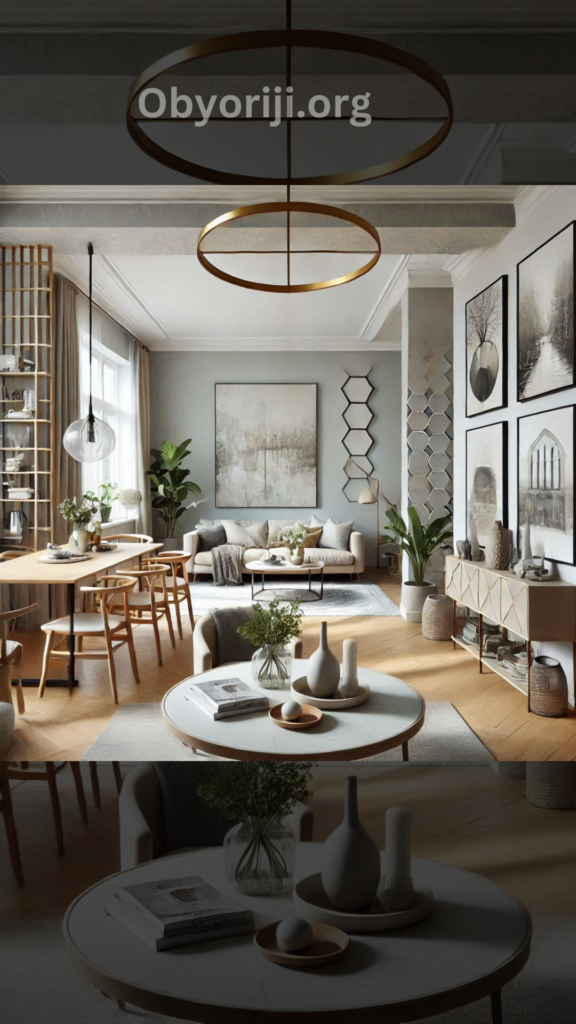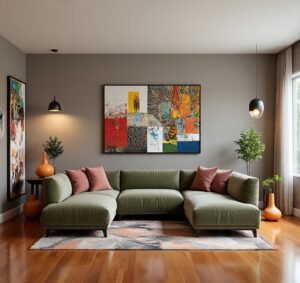
7 Living Room and Dining Room Combo Ideas

- Gorgeous Design – Pack of 4 Square Cushion Covers/Shells 18 X 18 inches(45cm X 45cm),No Filler or Insert.The bright and …
- Fantastic Colours-The throw pillow cases with teal and gold leaves patterns and invisible zip design which makes it look…
- Material – NIULAA throw pillow cases are made of high quality Eco-friendly linen, durable, and the Innovative pattern is…
Open-concept living has become a thing in modern home design, this could be because of the space constraint caused by the now over 8 billion people in the world, and the skyrocketing standard of living. Whatever it is, it has become a good plan and even a favourite to many. This design doesn’t only maximise space by shrinking the two rooms for both places, into one. It provides the same functionality, a seamless interaction between both sides of the house, creating a better use of space. Creating this design isn’t easy, but these 7 design concepts will provide useful direction towards achieving this combo.

1. Use Rugs To Define Each Space


Using rugs to define each area or session of your open space, is an effective way to separate the living and dining spaces without walls. This easily helps everyone know where the living room ends, and where the dining room starts. It can be done by placing a large rug in the living room area, to define the space, creating a cosy space, of course using a different rug for each session, ensuring rugs have modern vibes and complementary colours and design, to enhance your design theme. Go for quality, easy-to-clean rugs in the dining area, where food particles, spills and messes are bound to happen.


2. Use Furniture to Create Boundaries


Strategically placing your set of furniture can help divide the open space while keeping the layout open and demarcated for use, easily. Arrange the sofa with its back facing the dining area to subtly separate the two zones. This simple act tells the end/beginning of a space, using a bookshelf or console table as a divider between the living and dining spaces. Consider using open shelves, to guarantee functionality for storage space, while designing and demarcating the available space. Do not overload the space with tall furniture that will prevent a clear demarcation of the space.


3. Create a Unified Color Scheme


A cohesive colour palette will connect the area that needs to be connected, and make separate the area that needs to be separated, both areas will feel connected and harmonious, yet different in their way. To achieve this, ensure you stick to a neutral base, which would accommodate a pop of colours on items like cushions, artwork, shelves, sofas and curtains. Consider using the same accent colours in the living and dining room areas, to link the rooms through the design. Incorporate natural materials like wood or stone to tie the two areas together, like choosing a single colour for key furniture pieces, like a sofa and dining chairs, to create visual unity.


4. Multifunctional Furniture for Flexibility

Invest in interesting furniture that serves multiple purposes to make the most of your space. Some peculiarly shaped furniture draws attention to the space and its designs. Ensure you use a dining table that doubles as a workspace, a console may be, and that can expand into a dining table when it is needed. Consider an ottoman that provides a storage space. Your choice should be light chairs, not heavy, portable, yet stylish.


5. Lighting to Define Each Area

Lighting plays a crucial role in setting the mood in a space and distinguishing between spaces. Hang a statement chandelier or pendant light above the dining table to define the dining area, and draw attention to it. This enables you to distinguish the space setting,being another way to differentiate the parts of the house. Accentuate your design with floor lamps to make it cosy. Consider installing dimmable lights, that can be adjusted, to focus on an area that needs to be focused on, and at different times for different activities, wall lights, hanging lights, ceiling lights, and more.


6. Try Vertical Design Elements

Consider incorporating vertical design elements can enhance the aesthetic appeal and help define each area. Use different wallpapers, or paint colours, for some demarcations in different areas, to accent walls in each zone. Hang large artwork or mirrors to create a focal point in both spaces and make the space appear larger. Install shelving units to display decor items that complement each area. Maintain a consistent style for decor items across both spaces to ensure harmony.


7. Decorate with a Cohesive Theme

Choose a design theme that ties the living and dining areas together while allowing for individual flair. For example, using different wallpapers and designs, but choosing a common colour from both areas, to link the design areas. You can achieve this by: Combining sleek furniture, earthy tones, and geometric patterns for that homely look. Use soft blues, whites, and natural textures like rattan or jute for a breezy vibe. Incorporate metal accents, exposed brick, and neutral tones for an edgy aesthetic. Finally, use decor pieces like cushions, vases, or table runners to reflect the chosen theme across both spaces.

Conclusion
Design the living and dining areas combo, making it functional and stylish. You can make the most of your open-concept area by defining zones and using a unified colour palette from both areas to unify the theme. Incorporating multifunctional furniture, and modern, rustic aesthetics, these ideas will help you achieve a beautiful living-dining combo that suits your lifestyle and taste. Choose fitting, and multi-functional furniture, with built-in storage for your space, not overwhelming the available space with your furniture, without limiting space for leg movement through the areas. Consider including plants, and hanging your vacation or family photos on the walls.







